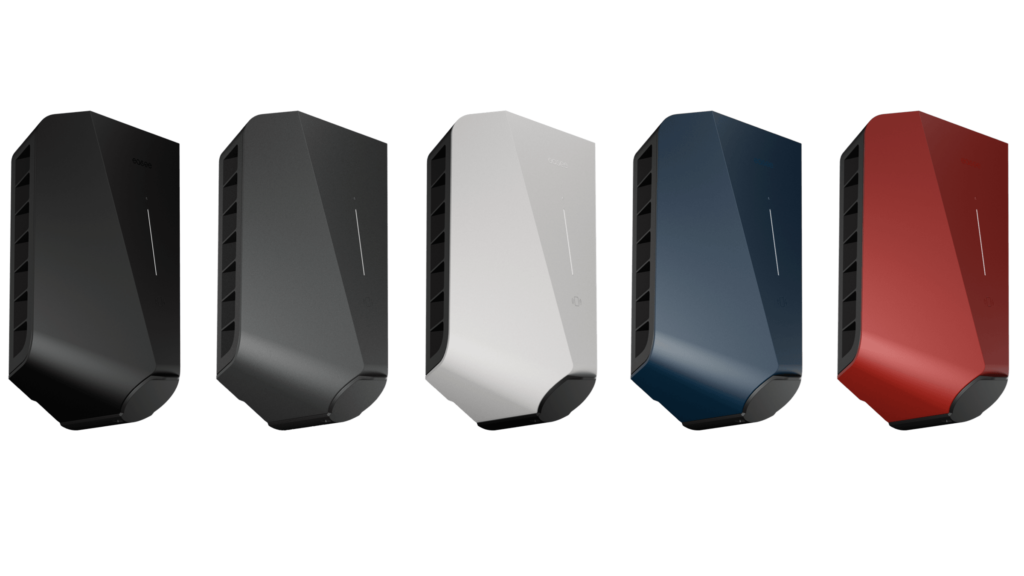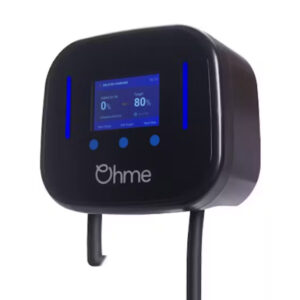Aesthetically, the Easee One is probably the best-looking affordable home EV charger on the market…
Yes, you’ve got the Andersen which overall is the best aesthetically, but it comes with a hefty price tag, and is 50% more expensive than the Easee One.
So, taking this into account and if price is a consideration, the Easee One is the obvious choice.
It’s neat and small at 25.6cm high, 19.3cm wide and 10.6com deep, comes in a range of colours (Black, White, Red, Blue, and Grey) and is packed with features, like:
✔ Up to 7.4Kw fast charging speed
✔ An easy-to-use slick app
✔ Locking device through RFID card
✔ Timed charging
✔ GPRS connectivity along with Wi-Fi
✔ Permanent locking of the charging cable if you want to leave it in place
✔ Built-in earthing
✔ 3-year warranty
But probably the most useful is the ability to install up to 3 of these on one house fuse, using the built-in load balancing facility. Which is especially useful for a home with multiple electric vehicles.
The Easee One takes its rightful place into our range of top EV charge points, and gets ? with ⭐⭐⭐⭐⭐


